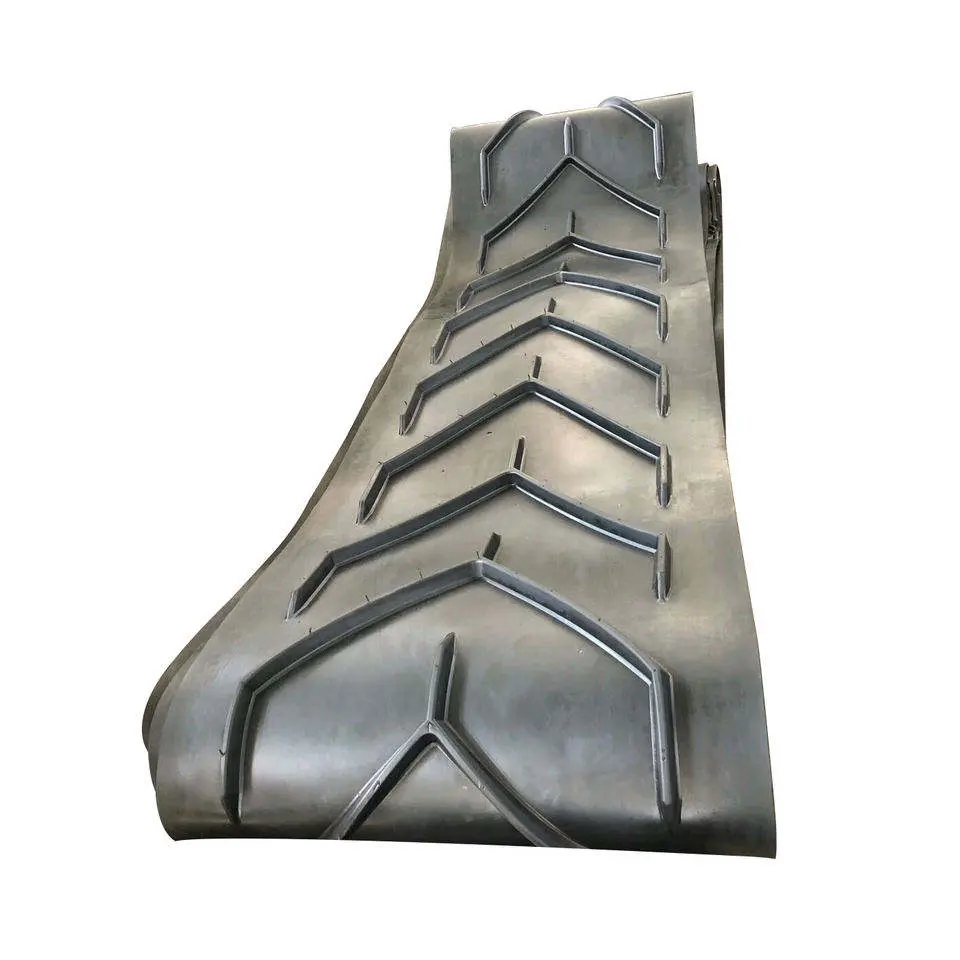How to Choose the Right Conveyor Belt
2025-06-27
Conveyor belts are a crucial component in a wide range of industries, from manufacturing to mining, food processing to logistics. Selecting the right conveyor belt is vital for the efficiency and safety of an operation. The wrong belt can result in downtime, costly repairs, and compromised product quality. This essay will discuss the key factors to consider when choosing a conveyor belt, including material type, belt design, load capacity, operating environment, and maintenance requirements.
https://www.hipowerbelt.com/heat-resistant-conveyor-belt.html
The material of the conveyor belt is one of the first considerations. It must be compatible with the products being moved and the conditions under which the system will operate. Common materials include:
Rubber: Ideal for applications requiring flexibility and durability. Rubber belts are resistant to abrasion and heat, making them suitable for handling bulk materials, heavy loads, or items in extreme temperatures.
PVC (Polyvinyl Chloride): A lighter, more flexible option used in applications with lighter loads and when sanitation is important, such as in food processing.
Polyurethane (PU): Known for its strength and resistance to oils, chemicals, and abrasion. PU belts are used in food, pharmaceuticals, and packaging industries.
Fabric Belts: Often made from polyester or nylon, these belts are ideal for applications that do not require high resistance to heat or chemicals but need flexibility.
Each material has distinct advantages and limitations. It is essential to understand the nature of the material being transported (e.g., heavy, sharp, or abrasive items) and select a belt material that can withstand these conditions.
2. Belt Design and Configuration
The design and configuration of the conveyor belt depend on several factors such as the type of product being transported, the conveyor system’s layout, and the desired speed. Key aspects to consider include:
Flat vs. Curved Belts: Flat belts are ideal for straight paths, while curved belts can transport items around corners, making them suitable for complex layouts.
Inclined Belts: Used when transporting materials at an incline. It’s crucial to choose a belt with enough grip to prevent slippage, such as those with cleats or a textured surface.
Modular Belts: These are made up of interlocking segments, which provide flexibility and ease of maintenance, especially in industries where frequent sanitation or belt replacement is necessary.
V-Belts and Timing Belts: Typically used in more specialized applications where the movement of items needs to be precisely controlled, such as in automated assembly lines.
Choosing the correct design depends on your specific needs, such as whether the conveyor system needs to move goods horizontally, vertically, or around bends.

3. Load Capacity
The load capacity of a conveyor belt is another crucial factor. It directly impacts the choice of material and design. A belt that can handle heavy loads might need additional support or a stronger material like rubber or steel-reinforced belts. Overloading a conveyor belt can lead to premature wear and system failures, so understanding the maximum weight the system will transport is essential.
Heavy-Duty Belts: Made from high-strength materials, these belts are designed to handle larger, heavier loads. They may be used in mining or recycling industries, where bulky and heavy materials are common.
Light-Duty Belts: These are typically used in industries such as food processing or packaging, where smaller, lighter items are handled.
The weight of the materials to be transported should always be compared against the belt's load-bearing capacity, ensuring that the system operates within safe limits.
4. Operating Environment
The operating environment of the conveyor system will dictate the type of belt required. Factors like temperature, moisture, chemicals, and exposure to UV light all influence the longevity and performance of the conveyor belt.
Temperature Extremes: Conveyor belts used in high-temperature environments (like bakeries or metal smelting) require materials that can withstand heat, such as heat-resistant rubber. In cold environments (like refrigerated warehouses), belts should be designed to perform in low temperatures without becoming brittle.
Chemical Resistance: If the conveyor belt will be exposed to oils, acids, or other harsh chemicals, a chemically resistant material like polyurethane may be necessary to prevent degradation.
Moisture and Wet Conditions: For wet environments, such as food processing plants or mines, belts must resist water damage. Materials like PVC or rubber with specific coatings can provide the necessary resistance to moisture.
UV Exposure: Outdoor conveyors or those exposed to sunlight for extended periods need belts resistant to UV degradation, typically achieved with special coatings or materials designed for such environments.
5. Maintenance and Longevity
Choosing a conveyor belt that is easy to maintain and has a long lifespan can reduce downtime and maintenance costs. Some belts are designed to be more durable, requiring less frequent replacement, while others may require more care and attention. Factors affecting maintenance include:
Ease of Cleaning: In industries like food processing, sanitation is crucial. Modular belts are often preferred because they can be disassembled and cleaned more easily.
Durability: Belts made from more robust materials, like steel-reinforced rubber, will last longer in abrasive conditions but may be more expensive upfront.
Cost of Replacement: While cheaper belts may have lower initial costs, they might need frequent replacements, increasing overall operational costs.
6. Speed and Efficiency
The speed at which the conveyor belt moves will influence its design and material. Faster belts might require more precise design to ensure smooth operation. High-speed conveyors used in package handling or automated assembly lines need to be able to move quickly without sacrificing load capacity or safety. It’s essential to match the belt’s speed with the intended operational flow to maximize efficiency.
7. Cost Considerations
While it’s essential to choose the right belt for the job, cost considerations are always a factor. It’s important to balance initial investment with long-term savings in efficiency, durability, and maintenance. Sometimes opting for a more expensive, high-quality belt can lead to lower maintenance costs and reduced downtime in the long run, making it a more cost-effective option.
Conclusion
Selecting the right conveyor belt involves a careful evaluation of several factors, including material type, belt design, load capacity, operating environment, and maintenance needs. By understanding the specific requirements of the operation, businesses can choose the most appropriate conveyor belt, ensuring efficient, safe, and cost-effective transportation of goods. Making the right decision will improve productivity and reduce the risk of costly failures and system downtime.
As a professional manufacturer and supplier, we provide high-quality products. If you are interested in our products or have any questions, please feel free to contact us.


